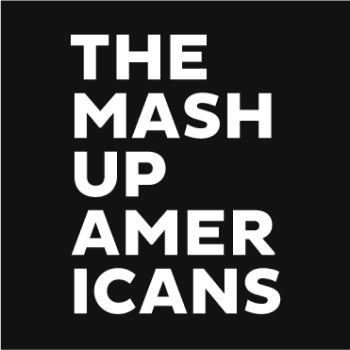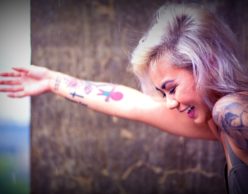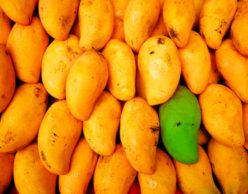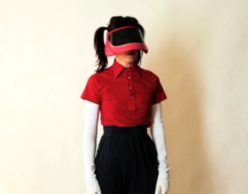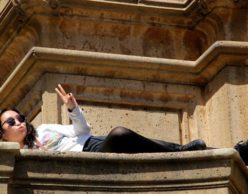Heidi Durrow on the Beauty of Being Mixed Race
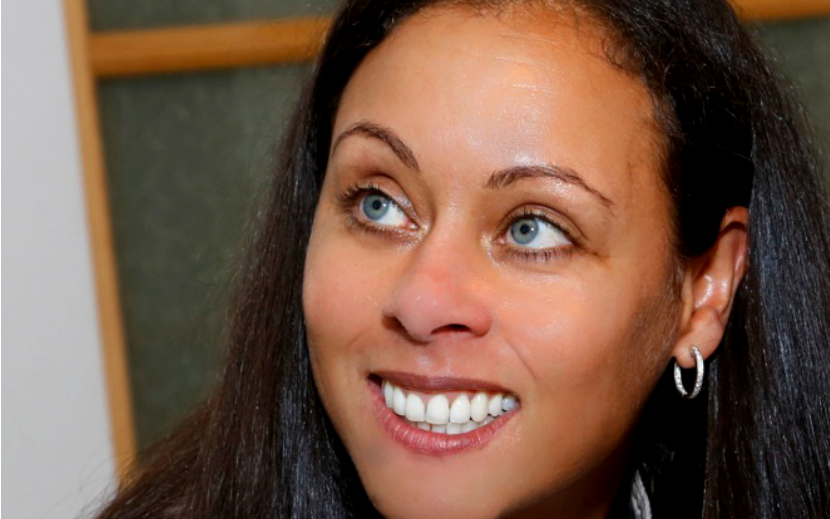
Heidi Durrow, the New York Times bestselling author of The Girl Who Fell From The Sky and winner of the 2008 PEN/Bellwether Prize, is a proud Mash-Up of a black American father and Danish mother. She’s a citizen of the world, but especially the U.S. This year, she launched The Mixed Remixed Festival in Los Angeles, an art and media festival that celebrates all things mixed in America. We are down with Heidi Durrow. Check out her podcast, buy her book, and get to know this incredible woman, if only to learn how white Danish women make brown babies. (And it’s not how you think.)
The Mash-Up Americans: First, our Mash-Up Speed Round Questions! Who are you?
Heidi Durrow: I am a writer and a mixture and a festival producer and podcaster and wife daughter and sister and friend.
How do you mash up?
I’m mashed up in a lot of different ways: Racially, culturally and as a person with a professional corporate background who is also a creative.
You grew up all over the world. Where do you feel most at home?
I think I feel most at home wherever I have my creature comforts so that could be anywhere. I just need coffee with the bendy straw, my Moleskine, a good pen and ink, wine and radishes, books and people I love. And my favorite stuffed animal.
What is your comfort food?
Bread and cheese, and I mean fresh, good bread.
What do you call your grandma?
I was lucky enough to have three grandmothers: one was my step grandmother, Grandma Minnie, and we called her Grandma Minnie. One was my father’s mother, who passed just last year at the age of 96. We called her Grandma or sometimes Grandma Rose. And then there was my mother’s mother, who I lost many many years ago when I was very young. But I knew her very well. We called her Mormor, which means grandma in Danish.
Speaking of grandmas, what is your bubbe miese?
Okay, this actually is true and serious. One old wives tale from Danish culture, at least as my mom tells me, is that if you sing at the dinner table you’ll have brown babies. And indeed, my mom sang at the table when she was growing up!
What’s the most absurd thing someone has said to you about your identity?
One of the funniest things that someone has said about my mom, who is from Denmark, was that they were surprised to learn what her background was. They always thought that her heavy accent meant that she was from the Bronx. I thought that was pretty funny.
That’s a perfect end to the speed round and segue to a more serious question. How do you think that Mash-Ups live in the imagination of current American culture?
I think we’re kind of like unicorns, in that people want to believe in us. They think that we’re magical in that our existence will eventually create racial harmony, and yet still they’re not totally ready to embrace the reality of what it would mean if American culture recognizes multicultural and the mixed experience fully. Because then they also have to recognize their own mixed-ness (good and bad) and their own lives and histories and families. I think that’s a complicated, difficult thing to do.
How does the Mixed Remixed Festival aim to change that?
The festival is meant to celebrate stories of the mixed experience racially culturally and to highlight the stories of racial and cultural connectedness. As we do that, through the arts in particular through films and books and performance, people learn a certain empathy and then they start to see themselves in what Barbara Kingsolver calls the “theoretical stranger.” Art may be the way that we will be most successful at actually changing the conversation about race and culture but also the conversation around mixed-race and mixed culture.
Is that the primary goal of the festival?
The goal of the festival is to celebrate these stories that haven’t necessarily been told in the past or didn’t have a forum in which to be told, and encourage emerging storytellers. When I was trying to publish my book, The Girl Who Fell from the Sky, it received some 48 different rejections from publishing houses mostly because people said to me that there was no market for a story about a half black half Danish girl. There was no Afro Viking demographic to sell this book to.
There was no Afro Viking demographic to sell this book to.
So the idea behind the festival is related to make sure that future storytellers also know that they have a place. The festival is also meant to be a kind of homecoming. So many of us who are in the mixed experience have felt isolated growing up wherever we are. The Internet has been a great place to bring people together but the festival is a community building event where people get to know each other personally. It’s called the Mixed Remixed Festival because I wanted to make sure that people knew it’s not just your past but also the way were mixing going forward.
How did the festival go this year?
Phenomenally well. We had about 700 people come through during the course of the day and the refrain I kept hearing over and over from people was that it felt like they were coming home. I felt so happy to hear that from so many people: That this was a place where they felt like they belonged and of course they did. And no one was doing math on their families and trying to figure out how they all related to each other. The programs were amazing and I’ll be sharing videos in the coming weeks from the different programs. We had the largest public radio station in Southern California do a panel presentation. We had Power 106 with a mobile DJ truck, so we had people dancing outside and great music. And then we had the most amazing live performance ever! So I can’t wait to share that with you. Key & Peele were there, Cheerios came, and kind of stole the show. And we have these amazing amazing performers who shared their complex and complicated and funny and touching stories. All in all I would say it was a huge success and I think it’s only going to get bigger and bigger each year.
Before you wrote The Girl Who Fell From The Sky, did you feel like any characters in the literary canon or film or music reflected you?
Actually there was exactly one, and it was a character created by the Harlem Renaissance writer Nella Larsen, in a semi-autobiographical book called Quicksand. A character named Helga Crane, who was half black and half Danish. I remember reading that book and thinking how amazing it was that someone could write a story about this complicated identity in 1929. It gave me permission really to write the story again in my own generation. Learning about Nella Larsen changed my life and I consider her my literary mother. Because without knowing I had that historical backup, I’m not sure if I ever would’ve gotten around to writing the story I needed to write.
At Mash-Up, we talk about guilt and relationships and family and hair and all the things that can be challenging for us. What’s the most challenging aspect of being a Mash Up for you?
The hair thing is actually very major struggle because it such a big part of a woman’s identity! But I think the most difficult part is reconciling the fact that grief is a major piece of coming to terms with a mash-up identity.
We also talked about how awesome it is to be who we are. What is the most positive aspect of being mixed for you?
I feel lucky that I have two languages and two countries and two cultures.
What advice would you give to a Mash-Up American who feels lonely or misunderstood?
The first thing I would say is you don’t have to be lonely in this experience. There so many of us who have gone through it or who are going through it and people are there for you. And then I’d say come to the festival. You’ll realize that you are not alone and you have family. You have belonging and home.

